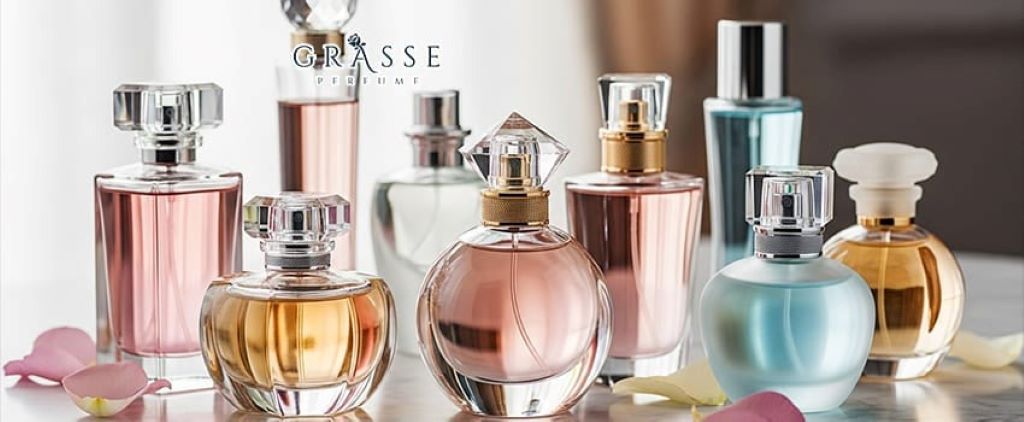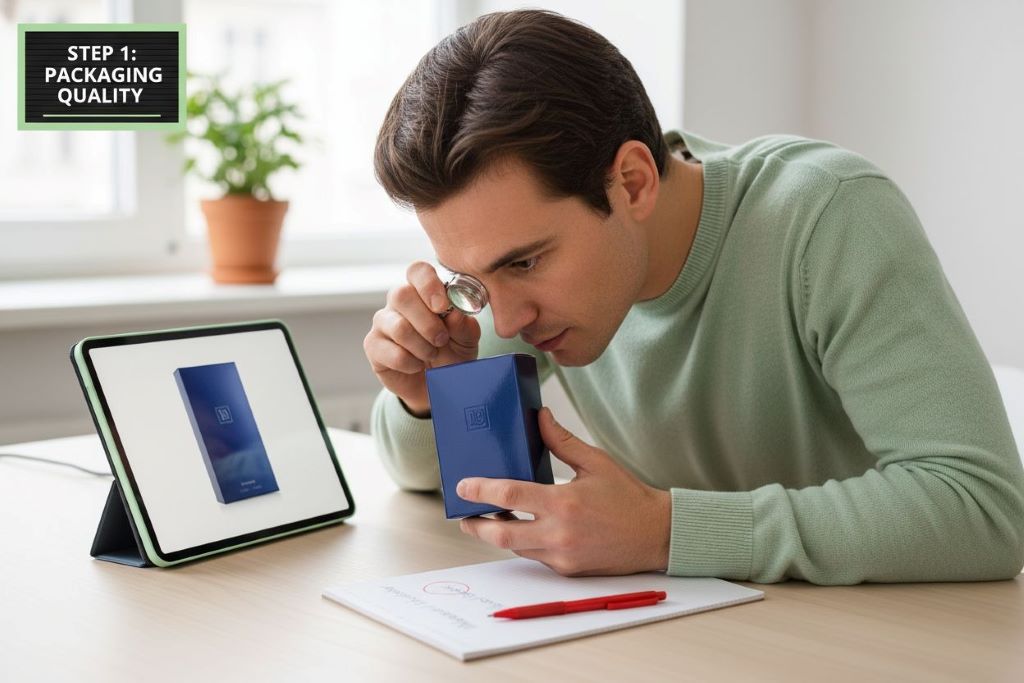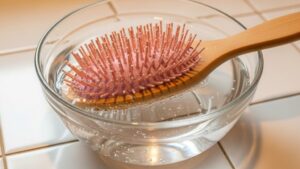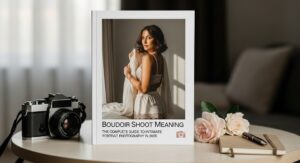Identifying Fake Luxury Perfumes Online

The online marketplace has revolutionized how we shop for luxury goods, making premium fragrances more accessible than ever before. However, this convenience comes with significant risks. The counterfeit perfume industry has grown exponentially, with fake products flooding e-commerce platforms and deceiving unsuspecting buyers. Shopping through trusted retailers like Luxury On Sales can help ensure authenticity, but understanding how to identify counterfeit fragrances remains essential for every online shopper.
Counterfeit perfumes represent a multi-billion dollar underground industry that threatens both consumers and legitimate brands. These fake products often contain harmful ingredients and fail to deliver the quality you expect from authentic luxury fragrances. Moreover, purchasing counterfeit goods supports illegal operations and undermines the craftsmanship of genuine perfume makers.
When searching for fake luxury products cheap, many consumers unknowingly expose themselves to sophisticated scams. Therefore, learning to distinguish authentic luxury perfumes from counterfeits has become a crucial skill for online shoppers. This comprehensive guide will walk you through the key indicators of fake perfumes and provide actionable strategies to protect yourself from fraudulent sellers.
Understanding the Counterfeit Perfume Market
The global counterfeit perfume market continues to expand at an alarming rate. Criminals exploit the popularity of designer fragrances by creating convincing replicas that fool even experienced buyers. These fake products typically sell at dramatically reduced prices, which initially appears attractive but ultimately delivers disappointment.
Counterfeiters have become increasingly sophisticated in their operations. They replicate packaging, bottle designs, and even authentication codes with remarkable accuracy. Additionally, they target popular brands like Chanel, Dior, Tom Ford, and Creed because these names command premium prices and have devoted customer bases.
The consequences of purchasing fake perfumes extend beyond wasted money. Many counterfeit fragrances contain dangerous chemicals, including methanol and other toxic substances that can cause skin irritation, allergic reactions, and respiratory problems. Furthermore, these products lack the complex scent profiles that define authentic luxury perfumes, resulting in fragrances that smell harsh, fade quickly, or bear no resemblance to the genuine article.
Red Flags When Shopping for Perfumes Online
Recognizing warning signs can save you from purchasing counterfeit fragrances. Several indicators consistently appear when dealing with fake products, and understanding these patterns helps protect your investment.
Unrealistic pricing stands out as the most obvious red flag. Luxury perfumes rarely receive dramatic discounts, especially for current releases. When a seller offers a popular fragrance at 70-80% off the retail price, skepticism should immediately arise. Legitimate retailers occasionally offer sales, but these discounts typically range between 10-30% off.
Seller credibility requires careful examination. New sellers with limited feedback, vague company information, or untraceable contact details often peddle counterfeit goods. However, established marketplaces like Amazon and eBay still host fraudulent sellers, so marketplace reputation alone does not guarantee authenticity.
Poor quality product images represent another critical warning sign. Authentic sellers provide clear, high-resolution photographs showing products from multiple angles. Conversely, counterfeit sellers often use stock images, blurry photos, or pictures that do not match the actual product description.
Suspicious seller behavior should immediately raise concerns. Sellers who refuse returns, avoid answering specific questions about authenticity, or pressure you into quick purchases likely have something to hide. Additionally, sellers operating from questionable locations or using unprofessional communication styles deserve extra scrutiny.
Examining Packaging and Presentation
Authentic luxury perfumes feature impeccable packaging that reflects the brand’s commitment to quality. Counterfeiters struggle to replicate these details perfectly, making packaging examination one of your most powerful authentication tools.
The cellophane wrapping on genuine perfumes appears smooth, tight, and professionally sealed. Fake products often display loose, wrinkled, or poorly adhered cellophane. Moreover, authentic perfumes typically have minimal or no excess glue on the wrapping, whereas counterfeits frequently show messy adhesive residue.
Box quality provides immediate clues about authenticity. Genuine luxury perfume boxes use premium cardboard with perfect printing alignment, sharp text, and accurate color reproduction. Counterfeit boxes often feel flimsy, display blurred logos, contain spelling errors, or show color variations compared to authentic packaging.
The batch code and barcode deserve careful attention. Authentic perfumes include batch codes that match across the box and bottle, allowing verification through brand websites or specialized apps. Fake products may lack these codes entirely, display mismatched numbers, or feature codes that fail verification checks.
Internal packaging elements matter significantly. Authentic luxury perfumes include properly fitted inserts, instruction booklets with correct grammar and spelling, and authentication cards when applicable. Counterfeit products often skip these details or include poorly printed materials with obvious errors.
Analyzing the Bottle and Cap
The perfume bottle itself reveals numerous authentication markers that counterfeiters find difficult to replicate accurately. Examining these physical characteristics provides strong evidence of authenticity or fraud.
Glass quality in authentic luxury perfumes feels substantial and appears flawless. Genuine bottles feature smooth surfaces without bubbles, seams, or imperfections. Conversely, fake bottles often feel lighter, display visible defects, or show rough edges around the base.
Cap construction and fit demonstrate brand quality standards. Authentic perfume caps align perfectly with the bottle, feature precise magnetic closures when applicable, and display clean, sharp brand engravings. Fake caps frequently fit loosely, lack proper alignment, or show poorly executed logos with rough edges.
The spray mechanism represents a critical authentication point. Genuine luxury perfumes incorporate high-quality spray nozzles that produce fine, even mists with consistent pressure. Counterfeit sprayers often malfunction, produce uneven sprays, or feel cheap when operated.
Brand-specific design elements require verification against official product images. Each luxury perfume incorporates unique bottle shapes, logo placements, and decorative details. Therefore, comparing your bottle against official brand websites or authorized retailer photos helps identify discrepancies that indicate counterfeiting.

Evaluating the Fragrance Itself
The perfume’s scent quality ultimately reveals its authenticity most definitively. Luxury fragrances represent complex creations involving premium ingredients and expert blending, characteristics that counterfeiters cannot economically replicate.
Scent complexity distinguishes authentic luxury perfumes from fakes. Genuine fragrances develop through multiple notes—top, middle, and base—that evolve beautifully over several hours. Counterfeit perfumes typically smell one-dimensional, harsh, or completely different from the authentic scent profile.
Longevity tests provide revealing results. Authentic luxury perfumes maintain their presence for 6-12 hours or longer, depending on the concentration. Fake perfumes usually fade within 1-2 hours, requiring frequent reapplication to maintain any scent presence.
The liquid’s appearance offers additional clues. Genuine perfumes display consistent color and clarity without particles, cloudiness, or separation. Counterfeit fragrances may appear murky, show color inconsistencies, or develop sediment over time.
Skin reactions demand attention. Authentic luxury perfumes undergo extensive safety testing and use quality ingredients that rarely cause adverse reactions. However, fake perfumes containing harmful chemicals frequently trigger skin irritation, rashes, or allergic responses.
Verifying Seller and Purchase Channel
Selecting trustworthy sellers significantly reduces counterfeit exposure. Different purchasing channels present varying risk levels that informed consumers must understand.
Authorized retailers represent the safest purchasing option. These sellers maintain direct relationships with brands and guarantee product authenticity. Department stores, brand boutiques, and verified online retailers like Sephora or Nordstrom provide reliable shopping experiences with established return policies.
Marketplace platforms require heightened caution. While Amazon, eBay, and similar sites host legitimate sellers, they also harbor counterfeiters. Therefore, researching individual sellers thoroughly, checking reviews carefully, and verifying authenticity guarantees becomes essential when using these platforms.
According to the International Trademark Association, counterfeit goods represent a $500 billion global problem, with perfumes and cosmetics among the most frequently counterfeited products. This staggering figure underscores the importance of vigilant shopping practices.
Social media marketplaces present particularly high risks. Platforms like Facebook Marketplace, Instagram shops, and private WhatsApp sellers operate with minimal oversight. Many individuals selling luxury perfumes through these channels offer counterfeit products, often unknowingly purchased from upstream counterfeiters.
Gray market sellers occupy a complicated middle ground. These vendors sell authentic products obtained through unofficial channels, sometimes from other countries or unauthorized distributors. While the products may be genuine, they often lack proper storage conditions, approach expiration dates, or cannot access warranty services.
Using Authentication Tools and Resources
Modern technology provides numerous resources for verifying perfume authenticity. Leveraging these tools enhances your ability to identify counterfeits before completing purchases.
Brand verification websites allow batch code checking for many luxury perfume manufacturers. Entering the code from your bottle confirms its production date and authenticity status. However, sophisticated counterfeiters sometimes copy legitimate batch codes, so this method works best when combined with other verification techniques.
Authentication apps like CheckFresh and others scan barcodes and batch codes to verify product legitimacy. These applications maintain databases of authentic codes and flag suspicious entries. Additionally, they provide production date information that helps identify expired or improperly stored products.
Professional authentication services offer expert analysis for valuable purchases. Companies specializing in luxury goods authentication examine products and provide official certificates verifying authenticity. This option particularly suits expensive perfumes or rare fragrances where investment protection justifies the service cost.
Community resources and forums provide valuable insights from experienced collectors and enthusiasts. Websites like Basenotes and Fragrantica host knowledgeable communities that help identify counterfeits and share seller experiences. Nevertheless, remember that community opinions represent informed perspectives rather than definitive authentication.
Taking Action Against Counterfeit Sellers
Discovering you have purchased a fake perfume requires immediate action to protect yourself and warn other consumers. Several steps help address the situation effectively.
Contacting the seller first allows potential resolution through returns or refunds. Document all communications and save transaction records. Many legitimate sellers accidentally receive counterfeit inventory and appreciate the opportunity to correct the situation.
Disputing charges through your payment provider offers protection when sellers refuse cooperation. Credit card companies and PayPal provide buyer protection programs that cover counterfeit purchases. Therefore, filing disputes promptly maximizes your chances of recovering funds.
Reporting counterfeit sellers helps combat the broader problem. Online marketplaces maintain reporting systems for fraudulent sellers. Additionally, brands appreciate reports about counterfeiters using their trademarks, as this information supports their enforcement efforts.
The Better Business Bureau accepts complaints about fraudulent businesses and maintains records that warn future consumers. Filing reports with relevant consumer protection agencies creates documentation that may support legal action against persistent offenders.
Conclusion
Identifying fake luxury perfumes online requires vigilance, knowledge, and careful examination of multiple factors. The counterfeit perfume industry continues evolving, but understanding key authentication markers empowers consumers to make informed purchases. Always prioritize purchasing from authorized retailers and trusted platforms that guarantee authenticity. However, when exploring other channels, remember to scrutinize pricing, packaging, bottle quality, and fragrance characteristics carefully.
The risks associated with counterfeit perfumes extend beyond financial loss to include potential health hazards and disappointment with inferior products. Therefore, investing time in verifying authenticity protects both your wallet and wellbeing. By applying the strategies outlined in this guide, you can confidently navigate the online perfume marketplace while avoiding the pitfalls of counterfeit products.
Remember that deals seeming too good to be true usually are. Luxury perfumes command premium prices because they contain quality ingredients and represent expert craftsmanship. Consequently, approaching heavily discounted luxury fragrances with skepticism serves your best interests. Stay informed, remain cautious, and prioritize authenticity over bargain prices when purchasing luxury perfumes online.
Frequently Asked Questions
Can I trust perfumes sold on Amazon?
Amazon hosts both authorized sellers and third-party vendors, creating mixed reliability. Purchasing directly from Amazon or verified brand stores provides reasonable authenticity assurance. However, third-party sellers require careful research, including checking seller ratings, reading recent reviews, and verifying return policies before purchasing.
How much cheaper can authentic luxury perfumes be sold legitimately?
Legitimate luxury perfume discounts typically range from 10-30% off retail prices during sales events or through authorized discount retailers. Discounts exceeding 50% warrant suspicion, especially for current popular fragrances. Authorized retailers occasionally offer deeper discounts on discontinued scents or during special promotions, but these situations represent exceptions rather than the norm.
What should I do immediately after receiving a suspected fake perfume?
Stop using the product immediately to avoid potential skin reactions or health issues. Document everything by photographing the packaging, bottle, and any identifying markers. Contact the seller to request a return and refund, clearly stating your authenticity concerns. If the seller refuses cooperation, initiate a dispute through your payment provider and report the seller to the marketplace platform.
Are tester bottles always fake?
Tester bottles are not inherently fake; brands produce them for retail demonstration purposes. However, testers should cost significantly less than regular retail bottles because they lack fancy packaging and may not include caps. Sellers offering testers at prices approaching regular retail prices or claiming testers as new sealed products raise red flags about authenticity.
Can counterfeit perfumes cause health problems?
Yes, counterfeit perfumes frequently contain dangerous chemicals not approved for cosmetic use, including industrial alcohol, harmful dyes, and toxic compounds. These ingredients can cause skin irritation, allergic reactions, respiratory problems, and more serious health issues with prolonged exposure. The lack of quality control in counterfeit production creates unpredictable and potentially dangerous products that should be avoided entirely.
Related Topics:
Romantic Surprise Ideas for a Non-Materialistic Person
Tech Integration: The Future of Smart Clothing Starting with Blank








